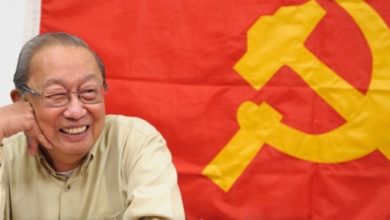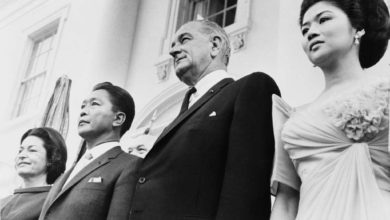The writer is a member of the Alliance for Just and Lasting Peace in the Philippines. He lives in Los Angeles.
Different human rights groups and alliances will commemorate the 34th year of martial law with different activities.
From mass actions and rallies to commemorative events and forums, the declaration of martial law on Sept. 21, 1971
|
Thirty-four years ago, president Ferdinand Marcos declared martial in the Philippines and plunged the country into 14 years of darkness.
Just to set the record straight, Marcos, like a thief in the night, signed presidential proclamation 1081 on Sept. 21. But he announced the declaration of martial law two days later, on Sept. 23, 1972. The announcement came right after his government had arrested more than 200 political opposition figures, activists and other potential threats to Marcos’s political career.
Marcos read the proclamation over the radio and the television stations while then-press secretary, Kit Tatad, read the names of the people who had been arrested. The list included senator Benigno Aquino Jr., Jose W. Diokno and others.
It is almost deja vu that a neighbor ASEAN country, Thailand, had a coup d’etat and was placed under martial law on the 34th year of our commemoration. This at the same time as Philippine president Gloria Macapagal-Arroyo is trying to institute another kind of martial law. She imposed “emergency rule” last February by declaring proclamation 1017 that copied proclamation 1081 word for word.
Effects of martial law: 1972-1986
Marcos declared martial law to protect U.S. economic and political interests. The Philippines was an important U.S. base for the war in Vietnam; thus the U.S. government supported Marcos’s declaration of martial law.
In 1981, vice president George Bush Sr. toasted Marcos when he visited the Philippines. Bush said, “We love your adherence to democracy.”
During martial law, more than 80,000 people perished, 3,000 activists went “missing,” and more than 300,000 people were arrested or thrown into jail.
Marcos and his family robbed the nation blind. They became some of the richest autocrats in history. They stashed away their money in different banks abroad while the Filipino people went hungry.
But in 1986, the Filipinos had enough of Marcos. They rose up in the well-known EDSA people’s uprising and overthrew the dictator, who was given sanctuary in Hawaii by the U.S. government.
Arroyo’s ‘new kind of martial law’
Now, the U.S.-Arroyo regime is in the processes of legalizing martial law with the anti-terrorism bill and a bloody campaign of political killings. A Marcos-like reign of terror is now in place in the Philippines.
More than 750 activists have been killed since 2001. More than 180 have been arrested and are now missing.
A counter-insurgency war is in progress in Mindanao and other parts of the Philippines. But, like Marcos, Arroyo is currently conducting peace talks with the Bangsamoro people. The Moro Islamic Liberation Front has warned the government that they will go to war if the peace talks in Kuala Lumpur break down.
Like Marcos, Arroyo had filled her cabinet with more than 22 former military officials. Her executive secretary is former general Eduardo Ermita. A Vietnam war veteran, he was reportedly involved in the U.S. military’s Phoenix Program that killed more than 50,000 Vietnamese during the Vietnam war.
Like Marcos, Arroyo wanted to change the constitution to suit her political ambitions. Like Marcos, she wanted to change the constitution to make it suit the economic, political, military and other interests of her American masters.
Like Marcos, who formed the Agrava Commission to investigate the Aquino assassination and found the guilty persons innocent, the U.S.-Arroyo regime responded by forming an investigative commission headed by formed justice Jose Melo.
At the same time, Arroyo named a known human rights violator, retired general Jovito Palparan, as a counter-insurgency adviser to the cabinet. Palparan is responsible for more than 120 killings from southern Luzon to central Luzon from 2002 to 2006.
The Filipinos fight back
But where there is oppression, there is resistance.
In the United States, the Alliance for Just and Lasting Peace in the Philippines is holding actions this week in response to the call of the International League for Peoples Struggle.
AJLPP organizations, who are also founding organizations of ILPS, like Pesante-USA, KmB (Pro People Youth), Ecumenical Fellowship for Justice and Peace, Justice for Filipino Veterans and other organizations in the United States, initiated various activities and other forms of mass action from Sept. 21 to 23 in New York, Seattle, San Francisco and Los Angeles.
AJLLP also is continuing its petition signing campaign to free Crispin Beltran and to remove National Democratic Front of the Philippines’ chief political consultant, Prof. Jose Maria Sison, from the U.S. and European Union terrorist lists.
Different prestigious organizations, like Amnesty International based in London, the World Council of Churches and the United States United Methodist Church, have condemned the extra-judicial killings in the Philippines and have asked president Arroyo to take decisive action against such state-sponsored terrorism.






